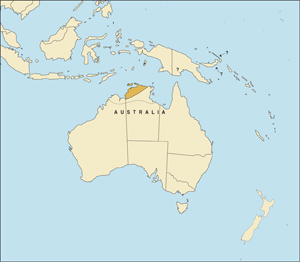 |
Bubalus bubalis
Búfalo acuático, Búfalo Asiático de agua (Sp), Wasserbüffel, Sumpfbüffel (G), Buffle d'eau, Buffle de l'Inde (F). Also called Asian water buffalo, or Indian buffalo. Scientific name is from the Greek boubalos, meaning buffalo. Some authorities distinguish between the domestic (including feral) water buffalo as Bubalus bubalis and the wild Asian water buffalo as B. arnee, while others, including ourselves, do not differentiate. As it was the domestic form that was first described for science, the name bubalis Linnaeus, 1758 takes precedence.
DESCRIPTION (male) Shoulder height 48-60 inches (122-152 cm). Weight about 1,200 pounds (545 kg), sometimes considerably more. Females are smaller.
A large, heavily built buffalo with stout legs and large, splayed hoofs. The skull is relatively light, long and narrow, with a nearly straight profile. The muzzle is large and hairless. The tail reaches to the hocks and ends in a small tuft. The coarse, sparse hair is moderately long and directed forward from hindquarters to head. General color is black, but older animals tend to be gray or pinkish. Lower legs are a dirty white, and there is often a narrow white "V" on the throat. The horns (both sexes) are heavy at the base, triangular in cross section, flat on top with conspicuous wrinkles, and grow out from the sides of the head without forming a boss. Horns in Australia will vary from the typical type that curve back from the head in a semicircle, to "sweepers" that stretch straight out from the head with only the tips turning back. The latter can attain tip-to-tip spreads of as much as nine feet (2.74 m). Female horns often have wider spreads than those of males, but are light and thin, almost never equaling male horns in total score.
BEHAVIOR Gregarious. Lives in small herds of 10-20, which often consist of an old cow with as many as three generations of calves. Mature bulls are usually solitary except during the mating season, but are sometimes found in the company of one or two other males. Individual animals and family groups may have specific territories.
Most activity is early and late in the day. Feeds mainly on grasses and aquatic plants, often submerging completely to reach the latter. Water is required, both for drinking and bathing. A good swimmer. Counters biting insects by submerging with only the nostrils exposed, or by covering itself with a layer of mud. Sense of smell is excellent, hearing good, eyesight fair. Despite its size, a water buffalo is quick and agile.
HABITAT From subcoastal plains and riverine areas with thick bush and open paddocks, inland to interior gorges and hills.
DISTRIBUTION Australia, in the extreme north of Western Australia, the Northern Territory and on several pivate estate properties in the Northern Territory. Also in Papua New Guinea, including New Britain and New Ireland. They are also found on several private estate properties in the Northern Territory.
REMARKS The endangered wild water buffalo has disappeared from most of its original range in southeastern Asia, and now numbers about 1,000 animals in India, plus a few scattered herds from India to Indo-China that may have descended from original stock. However, water buffaloes have been domesticated for thousands of years and have been widely introduced outside their natural range. Today at least 130 million are found throughout the world in warmer climates, both as domestic and feral animals.
Domestic water buffaloes were introduced in the South Pacific region from stock originating in India or Sri Lanka. The first ones probably reached Australia in 1824 with the Captain James Bremer expedition. Sixteen more were brought from the island of Timor in 1826 and liberated on Melville and Bathurst islands. When the Melville settlement was abandoned a year later, some of the free-ranging buffaloes were rounded up and shipped to Raffles Bay on the Cobourg Peninsula, from where they have expanded their range to what exists today. Many additional releases occurred from 1833 to 1869. Proof that these animals adapted well can be found in records of 390,000 water buffalo hides being shipped from Australia between 1886 and1956.
Allison says water buffaloes are "renowned for ferocity, the ability to remain hidden in little cover, uncanny stealth and kill-or-die charges." Large calibers and heavy bullets are recommended.
STATUS An Australian government program to eradicate populations believed to be infected with tuberculosis and brucellosis has been under way for several years. As a result, numbers have been greatly reduced and trophy size diminished.
|




